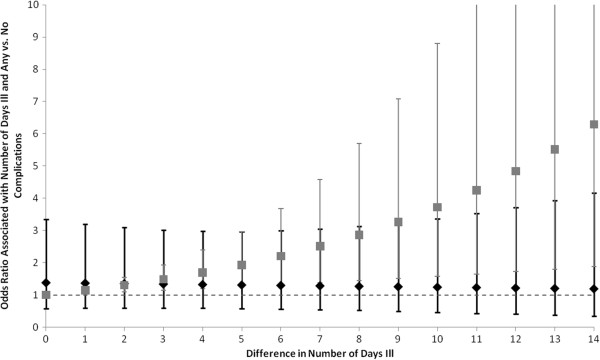Figure 3.

Interaction of number of days with diarrhea and complications on risk of catastrophic cost for a single episode of diarrhea, in a sample of 551 Bolivian infants seeking care for acute diarrheal illness, 2007–2009. The likelihood of experiencing a catastrophic cost decreases slightly as the difference in the number of days with diarrhea increases, when comparing those with a complication to those without a complication. When comparing children with no difference in complication status, the likelihood of catastrophic cost increases as the number of days with diarrhea increases. The black diamonds represent the point estimate for the odds ratio comparing children with at least one complication to those with none. The black bars are the 95% Confidence Intervals of these odds ratios. The gray squares represent the point estimate for the odds ratio associated with differences in the number of days with diarrhea, among children with no differences in their complication status. The gray bars are the 95% Confidence Intervals of these odds ratios. The dotted gray line represents an odds ratio of 1. We present odds ratios for differences in number of days with diarrhea from 0 to 14 days. (N = 295).
